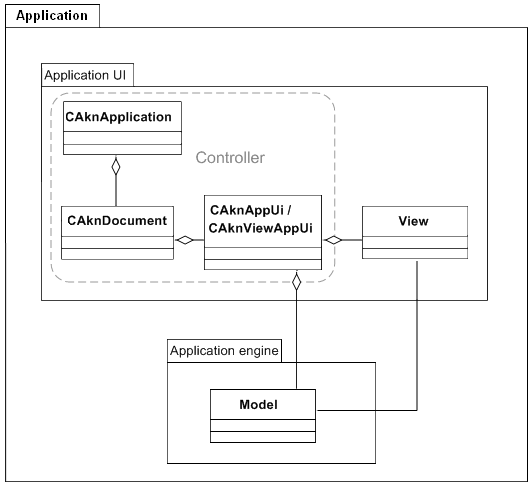Framework requirements for GUI applications
Applications developed for the Symbian platform can use a number of different architecture solutions to meet their requirements. One example of a common approach includes the Model - View - Controller (MVC) pattern used in GUI-based applications. In this approach, the application is split into three separate logical parts. Each part contains a different aspect of the entire application, and has a specific role.
In this approach, the model:
-
contains and manipulates the data in the application
-
is owned by the controller
-
is typically implemented in its own class or classes
the view :
-
displays the application state known by the model
-
receives user input
-
notifies the controller of relevant events
-
is implemented either with a CCoeControl derived class or a CAknView derived class.
For more information on these options, see Traditional Symbian UI application architecture and View architecture .
the controller :
-
handles application-wide events
-
commands the model, typically based on user input
-
selects the view to be displayed
-
is implemented either with a CAknAppUi -derived class or a CAknViewAppUi derived class.
For more information on these options, see Traditional Symbian UI application architecture and View architecture .
-
requires the implementation of CAknApplication and CAknDocument derived classes.
The pattern is implemented with the following classes.
The CAknApplication -derived class:
-
provides the application object expected by the application framework when the application is launched.
-
defines the application properties.
-
creates the CAknDocument derived class if it does not exist yet.
-
if an instance of the application is already running, switches to that instance and exits.
The CAknDocument -derived class:
-
creates the controller class
-
is the base class for application documents
Copyright ©2010 Nokia Corporation and/or its subsidiary(-ies).
All rights
reserved. Unless otherwise stated, these materials are provided under the terms of the Eclipse Public License
v1.0.

